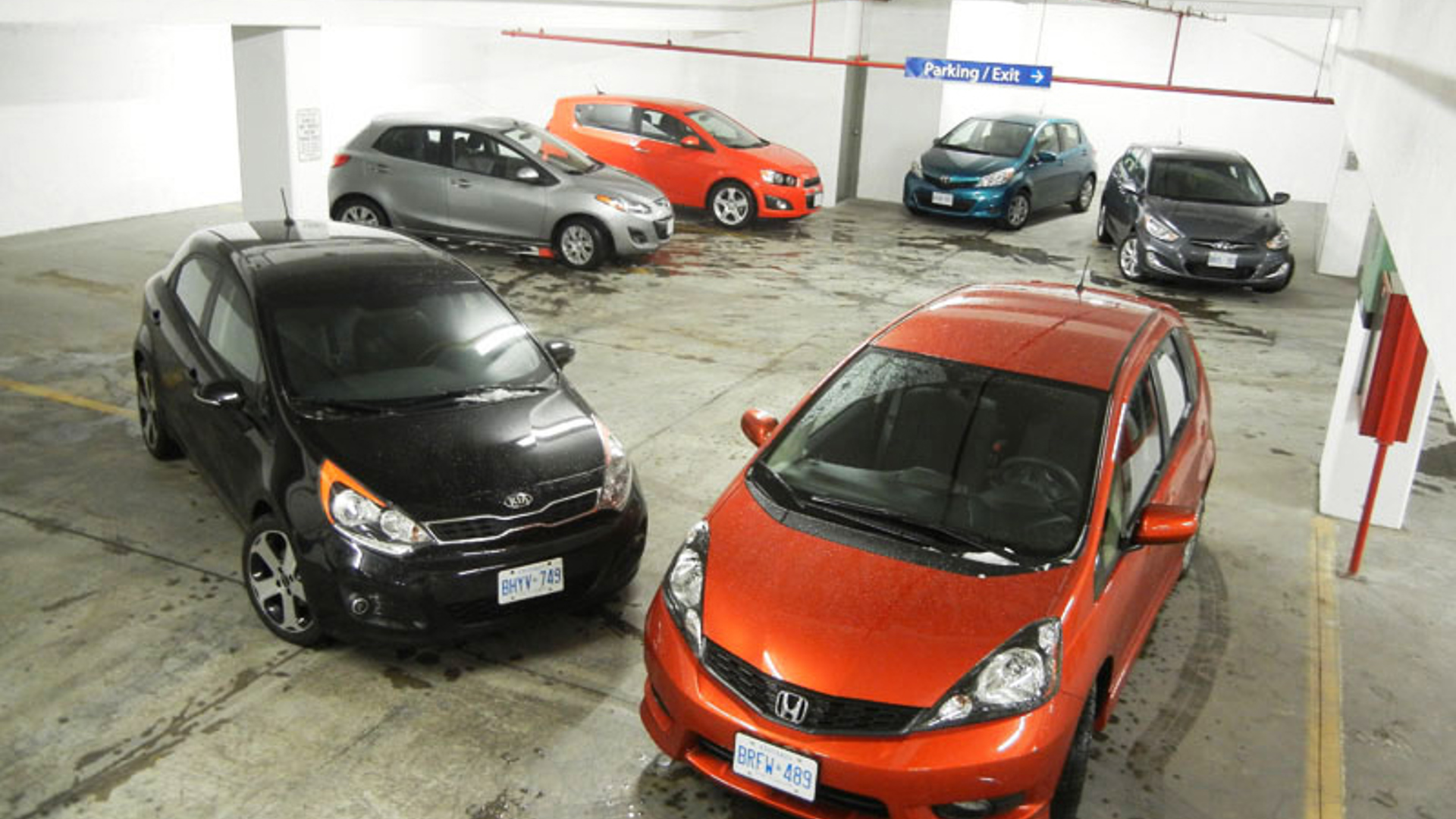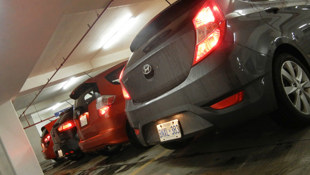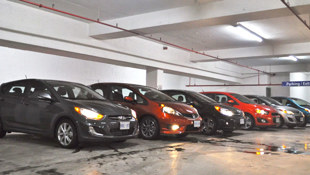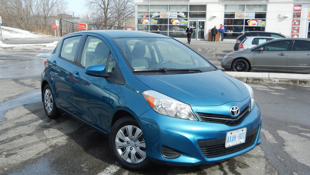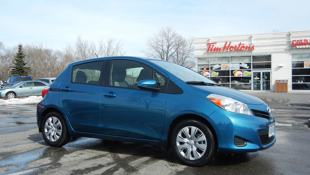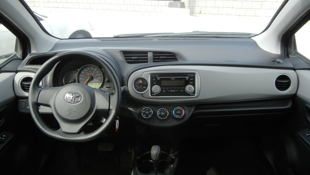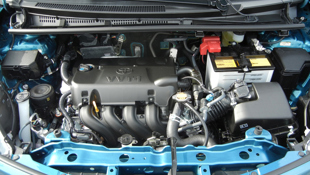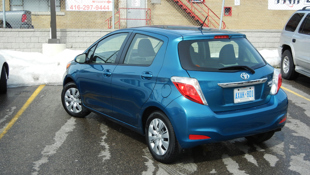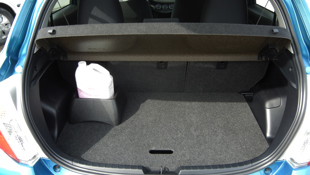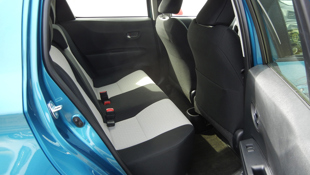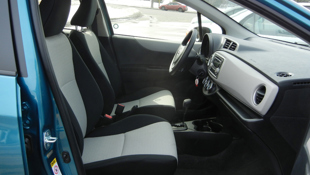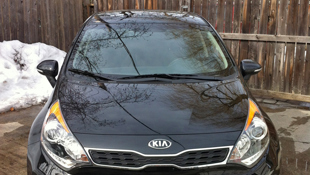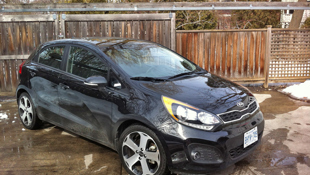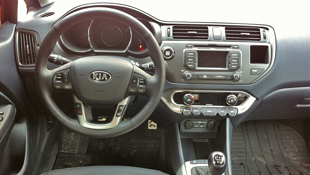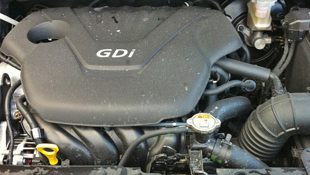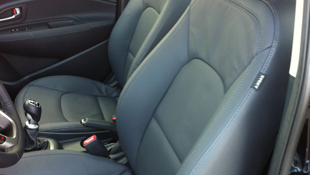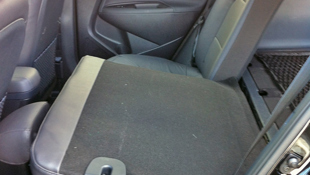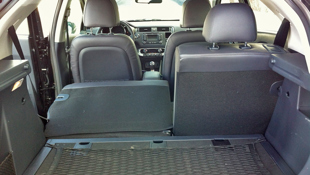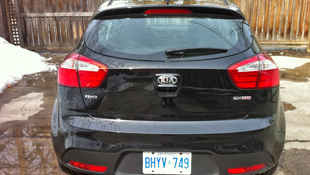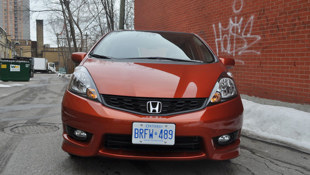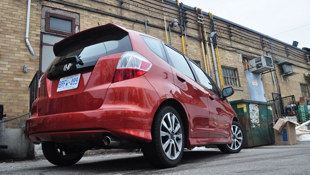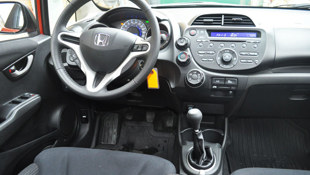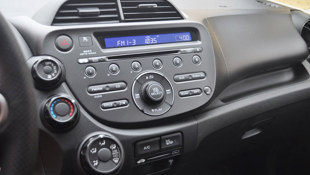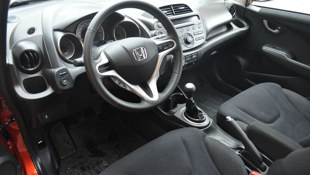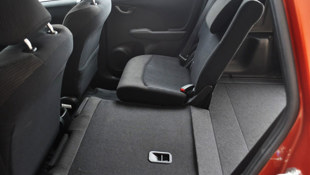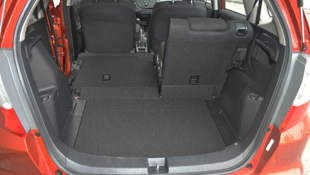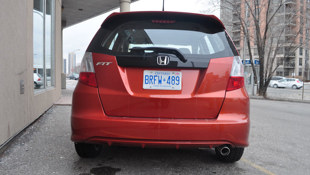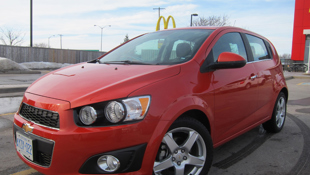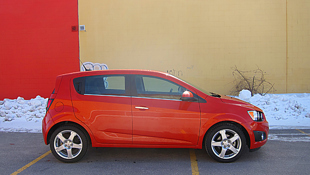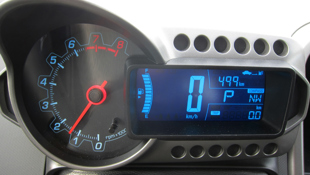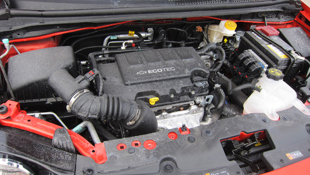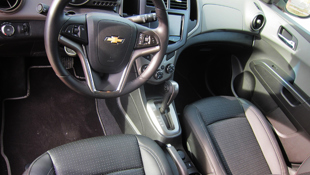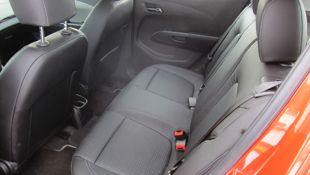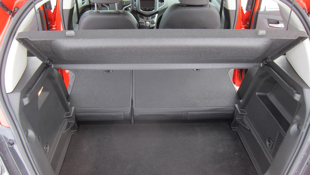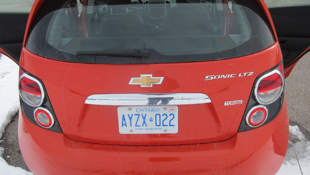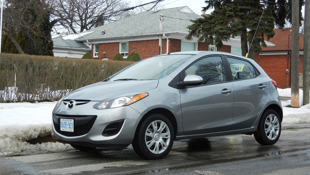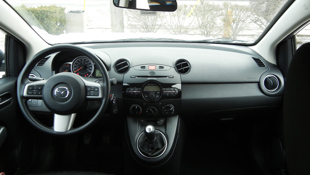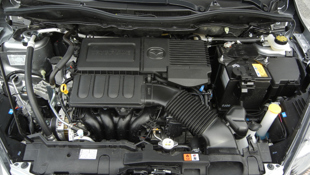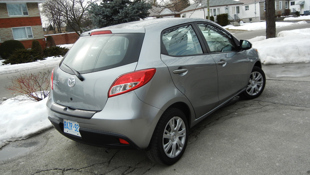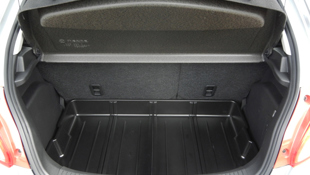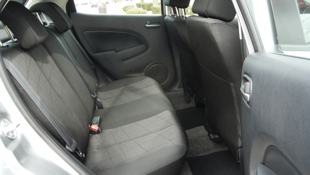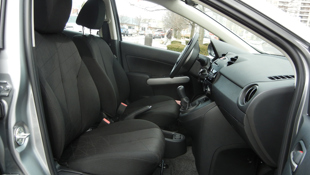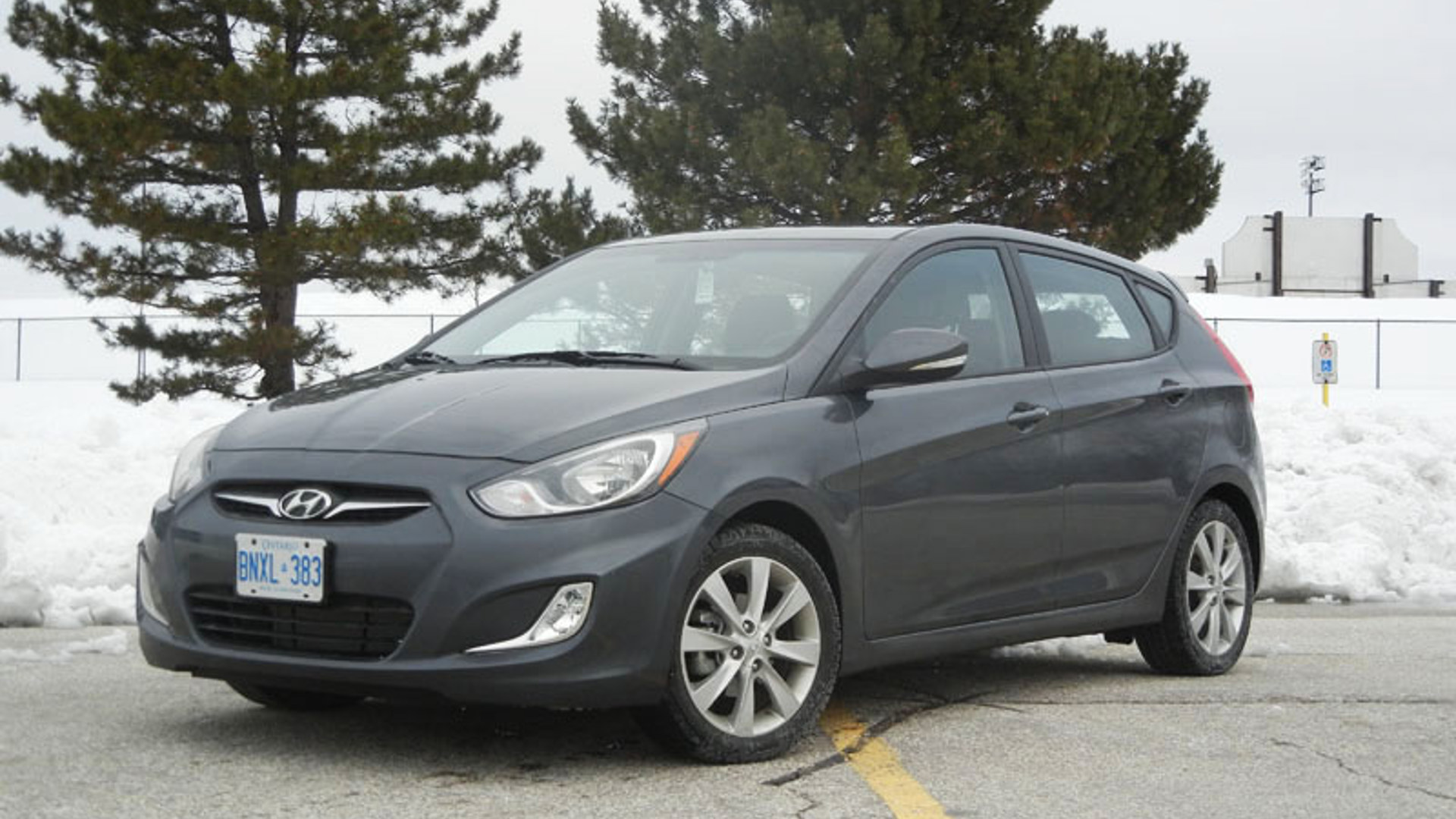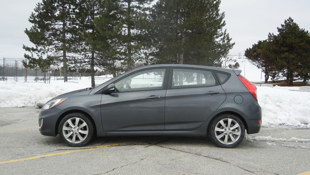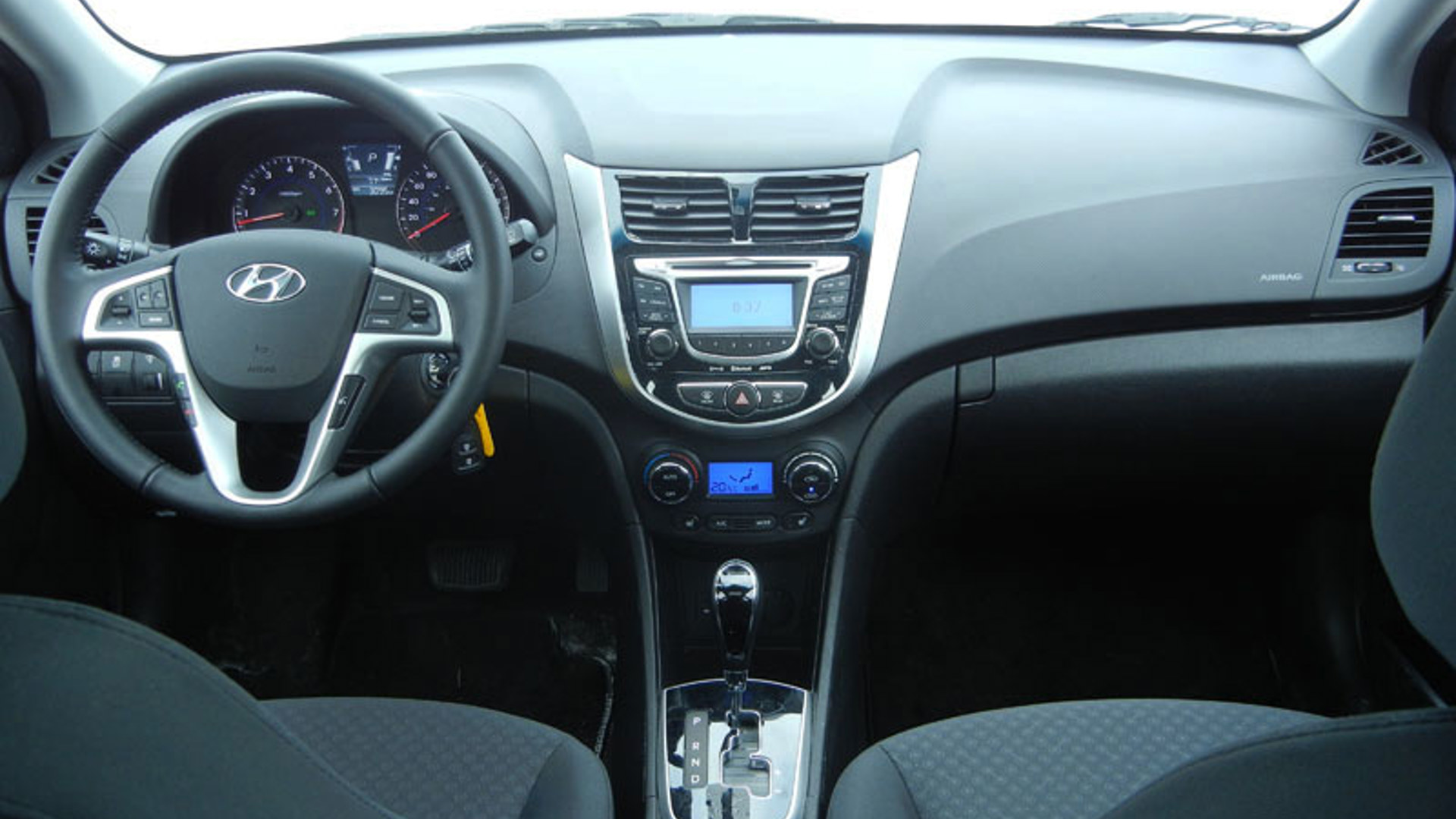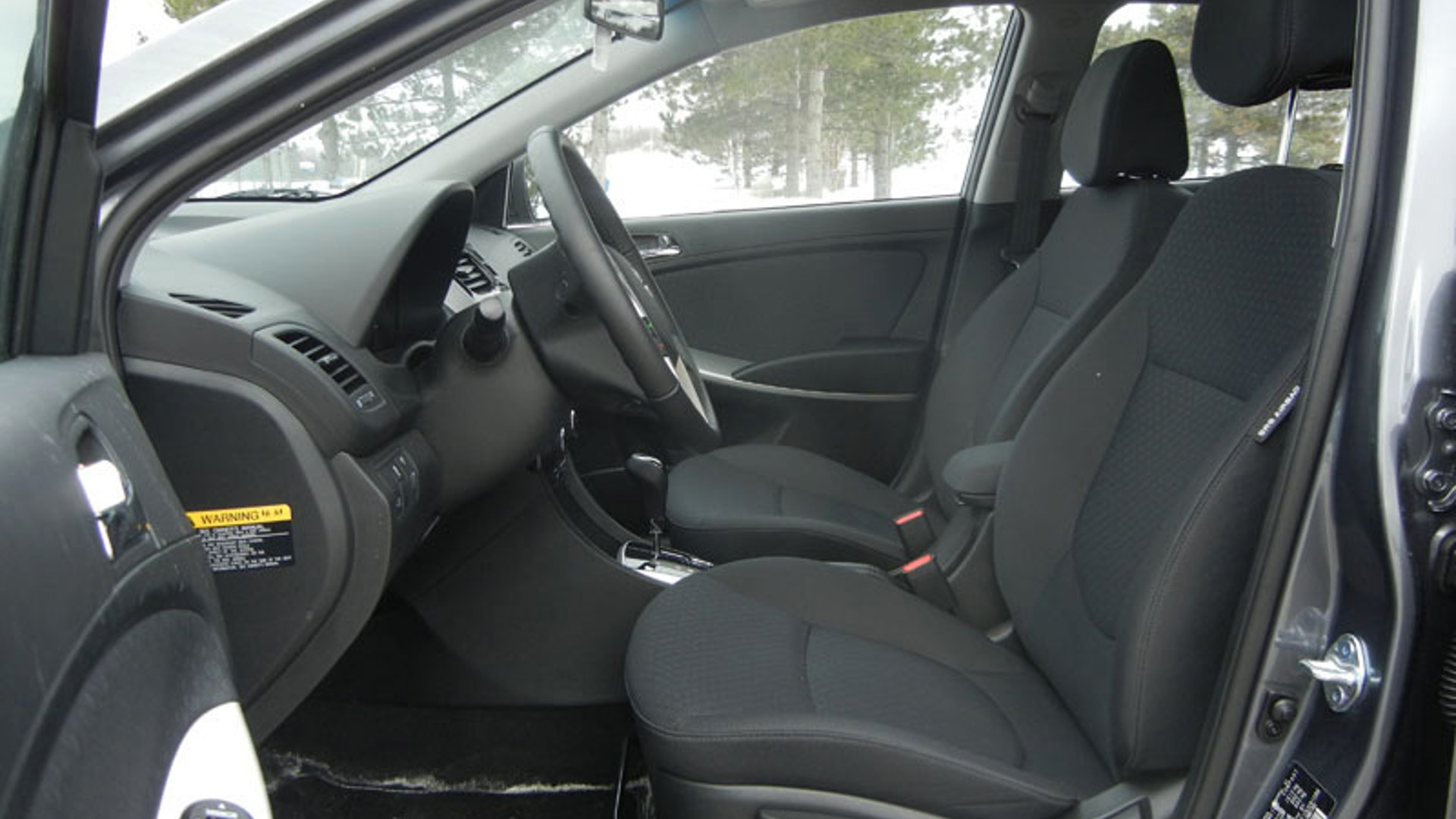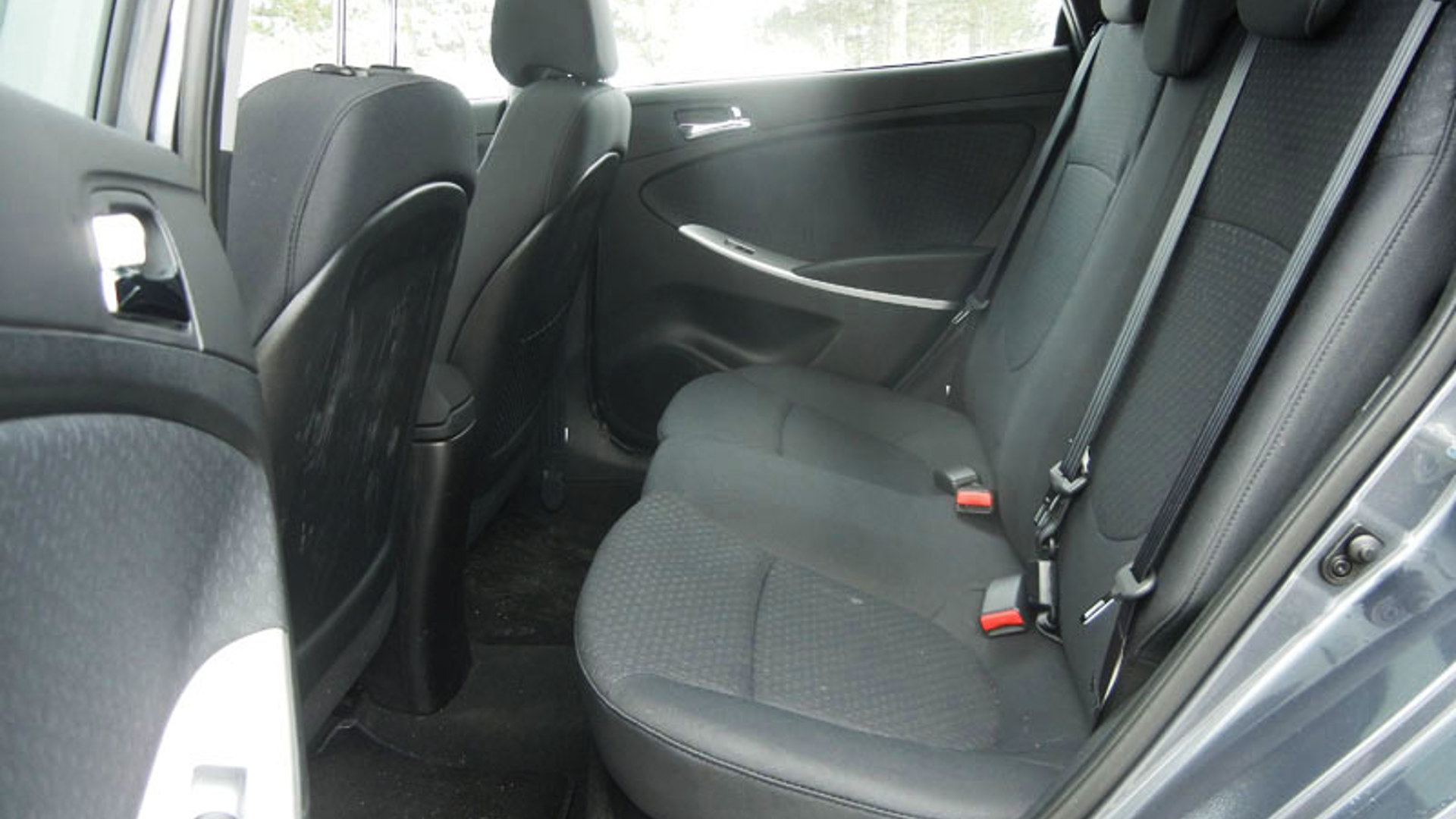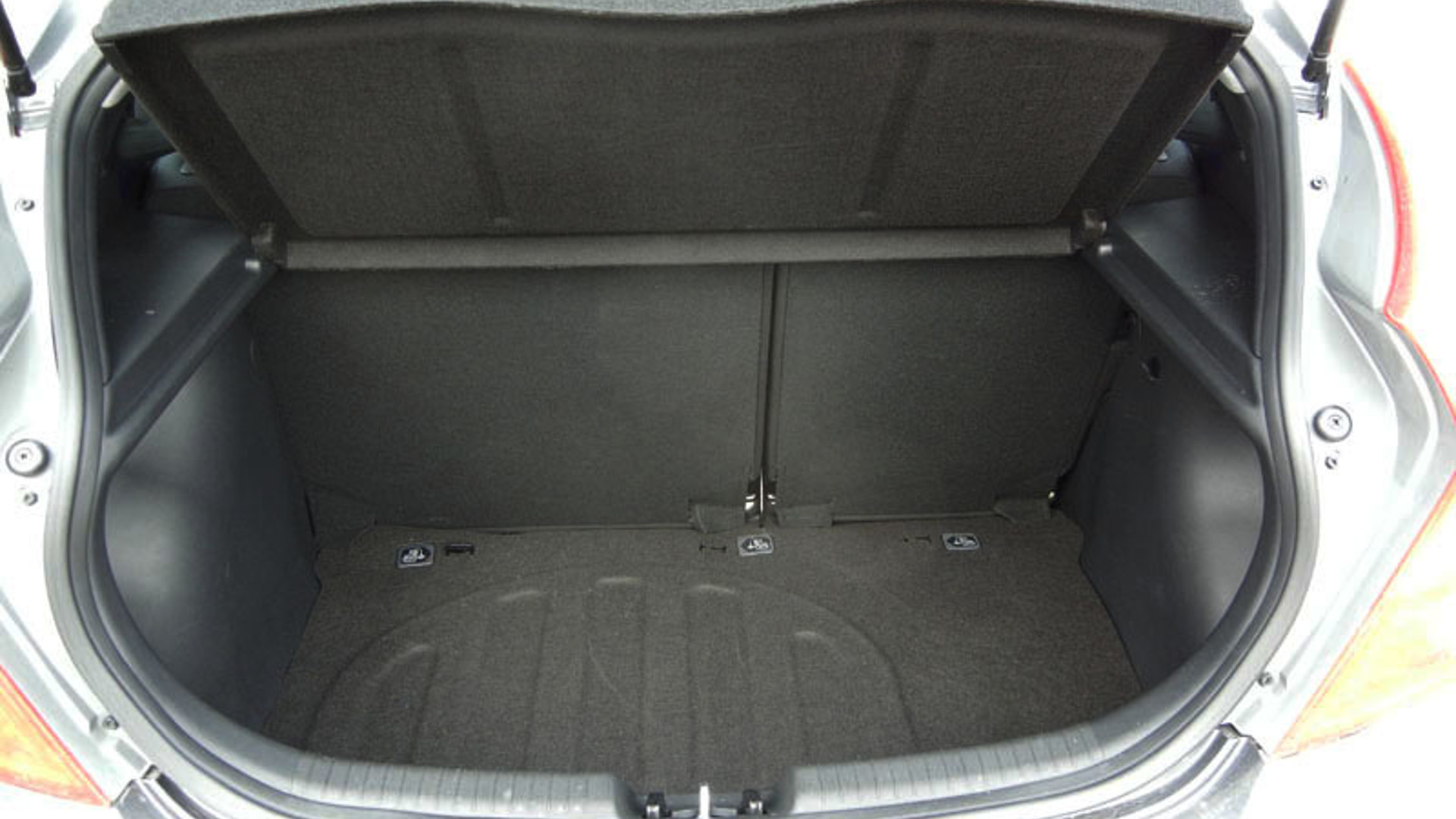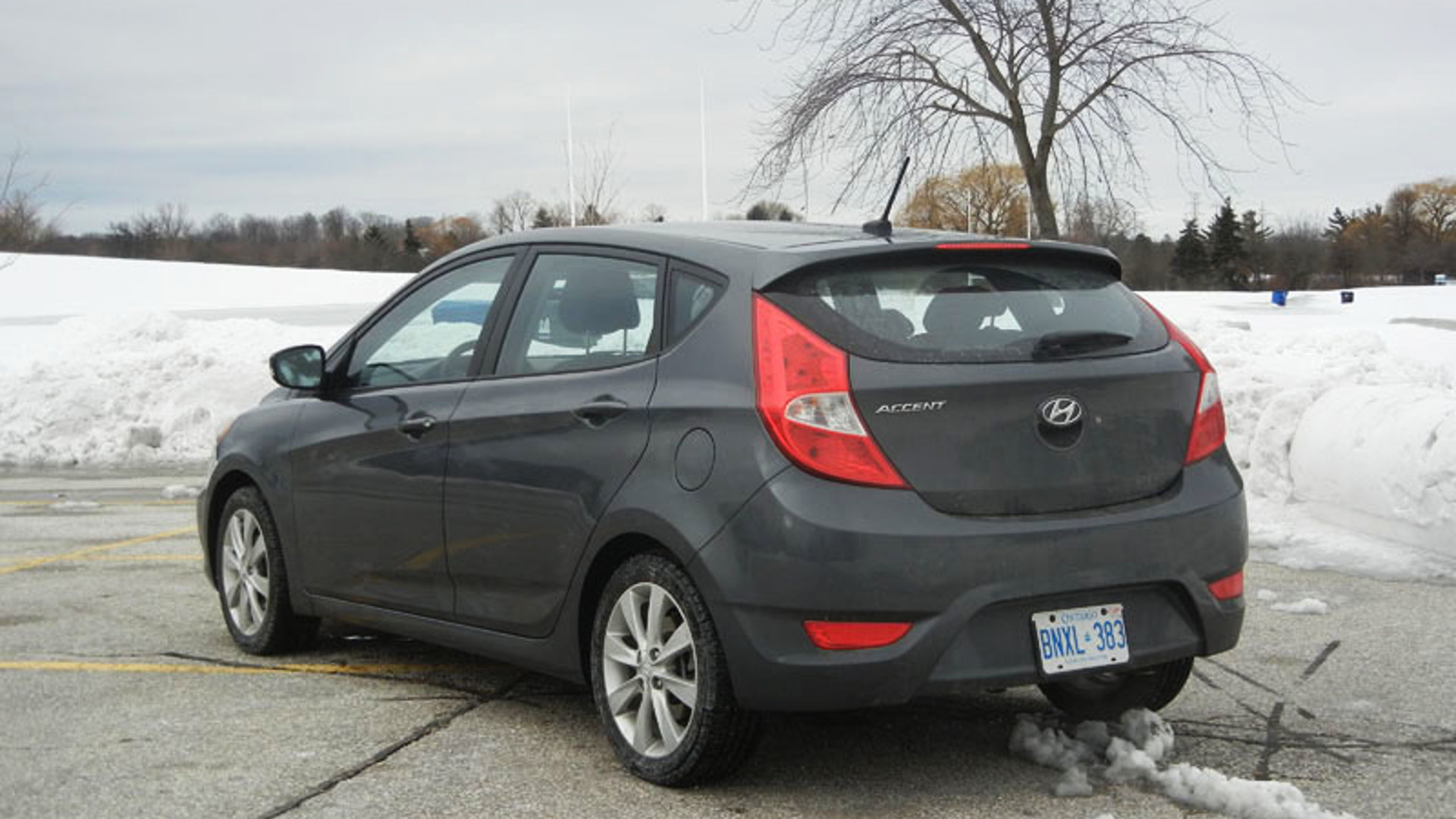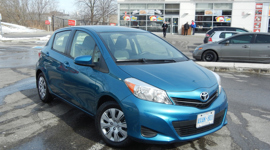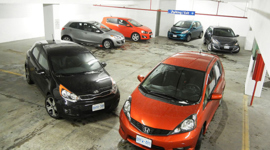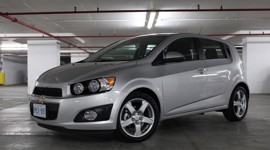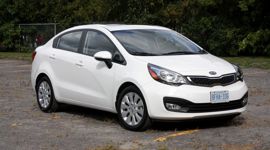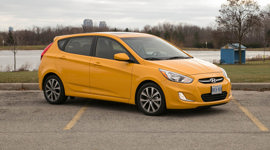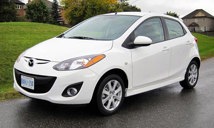Comparison Data
|
2013 Chevrolet Sonic 5
|
2013 Honda Fit
|
2013 Hyundai Accent 5 Door
|
2013 Kia Rio5
|
2013 Mazda2
|
2013 Toyota Yaris
|
|---|---|---|---|---|---|
|
Engine Displacement
1.4L
|
1.5L
|
1.6L
|
1.6L
|
1.5L
|
1.5L
|
|
Engine Cylinders
I4
|
I4
|
I4
|
I4
|
I4
|
I4
|
|
Peak Horsepower
138 hp
|
117 hp
|
138 hp
|
138 hp
|
100 hp
|
106 hp
|
|
Peak Torque
148 lb-ft
|
106 lb-ft
|
123 lb-ft
|
123 lb-ft
|
98 lb-ft
|
103 lb-ft
|
|
Fuel Economy
8.9 / 6.6 / 7.9 L/100 km cty/hwy/cmb
|
8.3 / 6.8 / 7.7 L/100 km cty/hwy/cmb
|
8.4 / 6.3 / 7.5 L/100 km cty/hwy/cmb
|
8.1 / 6.4 / 7.3 L/100 km cty/hwy/cmb
|
8.3 / 7.0 / 7.7 L/100 km cty/hwy/cmb
|
7.9 / 6.6 / 7.3 L/100 km cty/hwy/cmb
|
|
Cargo Space
538 / 1,351 L
|
583 / 1,623 L
|
600 / 1,345 L
|
425 / 1,410 L
|
377 / 787 L
|
433 / 728 L
|
|
Base Price
$22,645
|
$20,080
|
$18,949
|
$19,695
|
$14,450
|
$14,890
|
|
A/C Tax
$100
|
$100
|
$100
|
$100
|
$100
|
$100
|
|
Destination Fee
$1,500
|
$1,495
|
$1,495
|
$1,455
|
$1,495
|
$1,425
|
|
Price as Tested
$24,705
|
$21,675
|
$20,544
|
$21,450
|
$18,135
|
$18,515
|
|
Optional Equipment
$460 – Chevrolet MyLink, $265; Inferno Orange Metallic, $195
|
None
|
None
|
$200 – Colour, $200
|
$2,090 – Air conditioning, $1,195; Convenience Package, $895
|
$2,100 – 4-speed Automatic transmission, $1,000; Convenience Package, $1,100
|
Introduction, by Steven Bochenek
The year 2010 saw an historic first: more humans now lived in cities than in rural settings. Even if you missed that milestone in the news, you probably live it every day. Gas prices, enviro-guilt, the sheer impossibility of parking and general lack of space in cities have changed North Americans’ views of driving – and of subcompacts.
Plus the price factor. Price matters. (In his chunky tome, ‘The High Cost of Free Parking’, academic Donald Shoup claims vehicles stay parked 95 percent of the time, and 95 percent of the actual driving time so many of us do is simply getting from A to B in packed cities. Why cough up for that?)
All these reasons have contributed to making the subcompact far less uncool, even among driving enthusiasts. The six of us had a ball comparing these 2013 subcompact hatchbacks, and once the scores were tallied, it was amazing to note how close they came, especially the top five. And yes, price factored into point scores.
Test day was February 27, yet for the third time this winter the gods blessed our comparison day with the complete spectra of climates, rather than old-fashioned weather. It alternately spat needles of ice or suddenly dropped cow-sized puddles like being hit with a water-filled weather balloon – all day.
So it was a blast!
We all drove each model, following an identical route. At first, we stuck together, not wanting to lose two new drivers unfamiliar with the route – especially in this weather. We looked hilarious, possibly ridiculous: a colourful daisy chain of subcompacts gleefully splashing through slushy ponds in tight formation across north Etobicoke. More than once, I noticed hefty pickup trucks stocked with heftier workmen, staring gob-smacked as this rainbow anaconda of hatchbacks raced to make the same green, no amber, light.
The route we took was more classically suburban than downtown, but it cleverly had a taste of everything a city driver faces: some highway with ignorant truckers who haven’t slept in two days and revile all things 416; dense thoroughfares with multiple traffic lights; depressing industrial park; and a touch of middle-class neighbourhood with frozen au pairs walking labradoodles around slush lakes. To mimic the tight turns of a downtown lane, construction-constricted roads or, say, the constant challenges of a deep underground garage, we got creative and employed – you guessed it – a deep underground garage, with construction-restricted lanes.
So here you go: ask five auto writers one question and get ten opinions. Enjoy the diversity. (Finally, if you’re stuck in traffic and reading this on a device, please desist immediately. The mayor may be doing the same and you risk a severe rear-ending.)
6th Place: 2013 Toyota Yaris, by Peter Bleakney
Despite its last place finish, the Toyota Yaris five-door hatchback is more than the sum of its parts. But there’s no disputing this little tyke is no great shakes on paper. 103 hp? Meh. A four-speed auto? Oy vey.
The Yaris’ interior does it no favours either. This was the cheapest looking cabin of the bunch by a wide margin, and the only thing you can say about the alleged audio system is that it sounds as bad as it looks.
So, we’re not off to a good start.
Yet once underway, the Yaris shows a signature dynamic cohesiveness and user-friendly disposition that goes a long way in explaining why Toyota sells a gajillion Yarises (though it leaves us scratching our heads as to how anyone would choose a Corolla over this little gem). It may have finished last, but we still think it a good value and a good little runabout. Most of us found the seats comfortable and supportive (although Señor Yarkony did not). Drivers sit upright and all-round visibility is good.
The back seat got the highest marks for two-person comfort, and while the cargo area doesn’t have the trick multi-level floor of the Chevy Sonic or the contortionist seats of the Honda Fit, it sports a flat load space when the back seat is folded and the hatch opening is wide – not restricted by taillights or shock towers.
The tilt-only steering wheel was a problem for some testers, but it is connected to a nicely linear rack. In fact, we were all surprised by how nicely the Yaris drove. It’s nimble, eager to change direction, and for this tester, provided the smoothest ride of the bunch.
Despite its modest power output, the Yaris wasn’t particularly outgunned by the others (save the hot-rod Sonic) and I didn’t really notice the dearth of cogs within the tranny until trying to pass at highway speeds. Kickdown to third gear had the little 1.5L four howling like a love-starved Yak (pure speculation on my part).
The Yaris may not have much pizazz (okay, it has no pizazz), but it gets most of the basics right. It is user-friendliness personified, yet ultimately let down by its interior and four-speed auto, which no doubt can be blamed for it posting the worst fuel economy here.
Oh, wait a sec. There is something cool about the Yaris: that huge single windshield wiper.
Pricing: 2013 Toyota Yaris 5-Door LE
Base Price (5-Door LE): $14,890
Options: $2,100 – 4-speed Automatic transmission, $1,000; Convenience Package, $1,100
Destination: $1,425
A/C Tax: $100
Price as Tested: $18,515
Energuide estimated fuel consumption: 6.7/5.5 L/100 km
Energuide estimated fuel consumption (revised): 7.9 / 6.6 / 7.3 L/100 km cty/hwy/cmb
Observed fuel consumption: 8.9 L/100 km
5th Place: 2013 Kia Rio Hatchback, by Lesley Wimbush
This segment has, as they say, "come a long way baby."
Once a dreary penalty box of affordable compromise, the subcompact category now offers plenty of choice – wrapped in packages you'll actually want to drive.
Of the six hatchbacks in our cheap and cheerful comparison test, there wasn't a single dog. Although the focus is on value, there's a surprising level of style and engagement where once there was neither.
And it's fairly safe to say that none have evolved quite as much as the Kia Rio. What used to be a bizarrely styled example of automotive mediocrity has been transformed into a striking little hatchback laden with premium features.
When it came to outward appearances, the Rio five-door was the runaway winner, its crisp and upscale styling a credit to Kia Design Chief Peter Schreyer. It's a neat, tidy package with its clean, modern lines and sporting flashy LED accents normally reserved for premium European sedans costing tens of thousands more.
The Rio's cabin left us shaking our heads in disbelief. This, in a $20,000 car? Actually, the Rio5's base price was $19,695, and with freight and taxes it came to just over $21,000. The Rio's fully loaded interior scored it top marks for amenities and content.
For interior styling and quality of materials used, the Kia once again came out far ahead. Not only does the Rio SX Hatchback feature premium leather upholstery and heated seats, it also boasts a rearview camera, power sunroof, push-button start, Bluetooth and UVO infotainment. The icing on the cake is the leather-wrapped, heated steering wheel. All these features – several of which were only available as pricey options on a recently driven $45K German sedan – are standard in SX trim. The Rio's warranty was also the best of the bunch.
The Rio's leather seating also scored high marks for comfort, tying with the Mazda2. We also liked the wide front door openings, which we rated on par with the Honda Fit in Ease of Entry – the undisputed segment frontrunner for space and utility.
Unfortunately, where it fell down was in rear seating room. Two people can fit, but with the least headroom in the test group. Seating three in back was an exercise in discomfort, and cargo space was less than stellar – only the Mazda2 was worse in those 2 areas. It was the worst in group for ease of child seat installation, too.
Surprisingly, the Rio comes with a manual six-speed transmission. It's easy to drive, but nothing that will make an enthusiast's heart sing with joy. Clutch take-up is rather vague, as is the shifter engagement. Steering too, is numb and offers little feedback or feeling of precision. The handling is far from what could be called "sporty" – yet it's composed and the Rio rides comfortably. For maneuverability, handling, comfort and steering, the Rio came in about mid-pack. Surprisingly, it ranked worst for "easy to drive" factor – a reflection of its rather nebulous reverse gear placement, vague steering, and limited visibility.
Clearly, though, the little hatchback resonated with our judges since it tied with the Fit for top place in "emotional appeal".
Overall, the Kia Rio5 is an attractive hatchback, offering premium features at a bargain price. It falls a little short in cargo space and fuel consumption – areas that are of utmost importance to some buyers and for our judging criteria, but for others, perhaps not so much.
Pricing: 2013 Kia Rio 5-Door SX
Base Price (5-Door SX): $19,695
Options: $200 – Colour, $200
Destination: $1,455
A/C Tax: $100
Price as Tested: $21,450
Energuide estimated fuel consumption: 6.9/5.3 L/100 km
Energuide estimated fuel consumption (revised): 8.1 / 6.4 / 7.3 L/100 km cty/hwy/cmb
Observed fuel consumption: 8.8 L/100 km
4th Place: 2013 Honda Fit, by Michael Bettencourt
Whew, once at least a few of us got up off the floor from shock that the Kia Rio finished second last, it was time to delve into how exactly four vehicles finished ahead of what was generally accepted as the best-looking – inside and out – and most feature-laden car in the group. Especially since the Rio5 was also decently priced, coming in at a hundred bucks less than our fourth-place finisher, the $21,675 Honda Fit.
This price made the Fit the second-most expensive hatchback here, but it pulled in fans with both its scrappy driving personality as well as its major cargo flexibility. This was the Honda S2000 of the group: it loves to rev, with quick reflexes, a bouncy ride, and near continuous entreaties to go, go, go. It was loud in a racy rather than annoying way, spinning away at a busy 3,000 rpm at 100 km/h, and it needs to rev to get anywhere near its power band.
More than once, I found myself rowing the manual transmission’s five gears furiously, glancing down when I thought the cacophony meant I was surely approaching redline, only to find the Fit had 2,000 revs yet to burn my ears in order to reach its 7,000-rpm limit. This is still a product of the old, enthusiast-friendly Honda, and it tied the Rio5 for top scores in emotional appeal.
But where it really shone was in the practicality areas. Its flexible rear seats can be flipped and folded up and out of the way in a variety of positions, allowing bikes or other bulky gear to easily enter through the widely opening rear doors. Those rear seats were rated most comfortable for three people, and they also fold down almost totally flat, to the point where one of our braver and most svelte testers felt compelled to lie down back there to see if it felt as flat as it looked. It was also one of the easiest vehicles in which to attach a baby seat, thanks to its high, headroom enhancing body.
You know there’s a but coming, because the Fit did finish fourth, and actually there are a few. Its boisterous driving personality meant it could become overly yappy when you just wanted some quiet – it scored overall lows in ride comfort and NVH suppression. Its tall body hampered it somewhat in truly aggressive cornering, although it still managed to come in second for overall ‘fun to drive’ qualities, behind the Mazda2.
It is also starting to show its age, with five-speed transmissions that are short a gear, even in this entry-level class, which hurts fuel economy in this cost-conscious segment. With this generation having been introduced back in 2007, it must be said that the Fit’s funky styling inside and out has aged remarkably well.
The Fit still shines in some areas, but middling scores across a variety of areas has landed the Honda where it belongs, a former hands-down winner that’s now settled into a scrappy mid-pack challenger.
Pricing: 2013 Honda Fit Sport
Base Price (Sport): $20,080
Options: None
Destination: $1,495
A/C Tax: $100
Price as Tested: $21,675
Energuide estimated fuel consumption: 7.1/5.7 L/100 km
Energuide estimated fuel consumption (revised): 8.3 / 6.8 / 7.7 L/100 km cty/hwy/cmb
Observed fuel consumption: 8.6 L/100 km
3rd Place: Chevrolet Sonic, by Steven Bochenek
It’s refreshingly humbling to be wrong normally, and I vow never to opine out loud during future comparisons (I too was shocked by the Rio’s result). However, I did call for the Sonic LTZ to place or show, having driven all of these in the past. Out of 27 categories – plus the price factor – it scored first in one, tied for first in three others, and placed last in five – plus the price factor.
That left it in the Goldilocks territory nearly all the other times. But first let’s talk about the highs and lows.
This model features that peppy 1.4L turbocharged Ecotec four-cylinder engine. The six-speed automatic transmission’s gear ratios are generously spaced in first and second (though, to be fair, not dissimilar to all the others) for decent launching. In sixth it purred along easily at highway speeds without heavy revving. Braking feel and throttle were also well measured and inspired further confidence.
Consequently, the Sonic’s drivetrain was the favourite among drivers on the day and in the final tallying. Its EnerGuide city fuel economy is estimated at 7.7 L/100 km; its observed fuel economy on the day was a more realistic 8.1, coming quite close to our leaders in that measure.
Sadly, with that efficient engine, the Sonic scored worst for Handling and Maneuverability. Then, not surprisingly, the Sonic placed last in Fun to Drive. Fun, for some writers, is hard to have without a stick shift and sporty balanced steering. The steering felt loose and slightly disconnected – it came in last there, too.
Another first for the Sonic was a tie with the Rio for ease of child seat installation, which garners a huge ‘so what’ from everyone who’s never had to secure a struggling snow-suited toddler in the back seat of a subcompact during a winter gale. For many, it’s the first time in adulthood when we utter that famous middle-age-in-waiting whine, “Oh, my aching back!”
But in a category where no car broke the $25,000 barrier the Sonic LTZ cost $3,030 more than its closest rival. Ouch, that price factor. Still, no wonder it placed second for features and amenities, and with best stereo and interface of the bunch thanks to six speakers and Chevy MyLink.
While well behind the Kia Rio for Exterior Styling, the Sonic still placed significantly ahead of the others. The Rio is positively charming, but the Sonic has a touch of uniqueness with its simple, honest (and practical) shape, exposed headlight and taillight clusters and alloy wheels.
Other seconds included Ease of Entry Front, Cargo Space, Rear Seat Comfort for Two People, Ride Comfort, and Ease of Entry Rear (‘ba-DUHM-tssh’).
Hence the Sonic’s third place overall in a very competitive segment.
Pricing: 2013 Chevrolet Sonic LTZ 5-Door Automatic
Base Price (LTZ 5-Door Automatic): $22,645
Options: $460 – Chevrolet MyLink, $265; Inferno Orange Metallic, $195
Freight & PDI: $1,500
A/C Tax: $100
Total: $24,705
Energuide estimated fuel consumption: 7.7/5.5 L/100 km
Energuide estimated fuel consumption (revised): 8.9 / 6.6 / 7.9 L/100 km cty/hwy/cmb
Observed fuel consumption: 8.1 L/100 km
2nd Place: 2013 Mazda2, by Peter Bleakney
Being auto writers, we are generally appreciative of cars that juice our enthusiasm for driving, and as such, this little offering from Mazda had most of us grinning. With only 100 hp and 98 lb-ft at 4,000 rpm from its 1.5L four, it was the weakling of the group, but with only 1,051 kg to haul about, the smooth and willing four-banger went about its business like a frisky puppy.
The Mazda2 is a complete driving package showing a sharp chassis, direct steering and a stubby, five-speed shift lever spouting from the base of the centre stack that isn’t all that far removed from cousin MX-5’s (née Miata) legendary rifle-bolt device.
The seats are good, driving position fine, and while the interior is not daringly styled it has a sense of quality and no-nonsense ease of use, although the head unit and vent’s resemblance to Mickey Mouse are an odd design inspiration. The four-speaker audio (part of the $895 Convenience Package) wasn’t bad either, although there wasn’t much else in the way of features to speak of.
The ride is certainly firm, and because of its short wheelbase this diminutive Mazda gets pitchy on some surfaces. That said, it’s a commendably refined firmness bereft of crashy harshness. Can’t say that for the Fit.
Being the smallest of the group, it’s no surprise it fared the worst when we did our two- and three-person back seat test. It also scored lowest for cargo space.
Not only does its lightness pay off dynamically, the Mazda2 tied for best fuel economy here with the Hyundai Accent. Factor in its lowest as-tested price and this cheeky little runabout has a lot to offer for drivers who want to have some fun on a budget.
Pricing: 2013 Mazda2 GX
Base Price (GX): $14,450
Options: $2,090 – Air conditioning, $1,195; Convenience Package, $895
Freight & PDI: $1,495
A/C Tax: $100
Total: $18,135
Energuide estimated fuel consumption: 6.8/5.6 L/100 km
Energuide estimated fuel consumption (revised): 8.3 / 7.0 / 7.7 L/100 km cty/hwy/cmb
Observed fuel consumption: 7.9 L/100 km
1st Place: 2013 Hyundai Accent, by Michael Bettencourt
And now your winner, the 2013 Hyundai Accent, a subcompact car that was so polished, so sophisticated, you almost want to address it as ‘sir’. Its conservative yet modern design speaks of understated elegance, its interior appointments and generous luxury features again reinforcing that notion. Road and engine noise were nicely subdued, and it imperviously rode over rough pavement and expansion joints with minimal head-shake and thumping.
No question, this is the blue blood member of proper subcompact society.
Its greatest strength was its demonstrated capability in every area, with minimal weaknesses, though it surprisingly managed to win it all with the best scores in only two categories: Noise, Vibration and Harshness (NVH), and observed fuel economy. And both of those were ties with another entrant, matching the Rio5 for lowest NVH, and the much less powerful Mazda2 in observed fuel economy.
That observed fuel economy was particularly key for the Accent’s win, as buyers in this segment tend to be cost conscious and, to a lesser extent, environmentally aware. So this parameter was understandably weighted very highly in this group, making it no coincidence that the Hyundai and the similarly efficient Mazda2 finished with gold and silver medals in this contest. Both managed a 7.9 L/100 km average after the six varied test loops we drove back to back in each of the six cars, over a full day of testing.
Interestingly, the Rio5 finished second-last in real-world fuel consumption (at 8.8 L/100 km), even though the corporately related Koreans share the same engine and transmissions: a 1.6L four, here equipped with the same six-speed automatic, with a six-speed manual also available for both. Using EPA five-cycle consumption numbers that are standardized but more realistic than Canadian two-cycle figures, all these cars average between 7.4 and 7.6 L/100 km, except for the short-geared Fit, which is just behind at 8.1 overall. Whether or not the wet, snowy conditions we encountered this day and winter tires (which all cars wore) affected some cars more than others is anyone’s guess. One theory was that the Hyundai’s lower fun-to-drive scores and higher fuel economy numbers suggest that folks behind the wheel thrashed the Kia more than the Accent.
No, the Accent was not a car that goaded you into ripping off redline shifts using the automatic’s sequential ‘tipshift’ mode, one of the few automatics to offer that option. Instead it enticed the driver to relax and get comfortable, with heated seats, automatic climate control, satellite radio, and driver’s seat height adjustment. Sure, it didn’t come with the leather seats that the Sonic and Rio5 did, nor the flashy LED headlights, heated steering wheel or back-up camera of the fully loaded Kia. But it also came in about a thousand dollars less expensive than its corporate sibling, and more than four grand less than the priciest Chevy.
In this segment, arguably more than any other, offering a low price along with value for money is key. And that’s where the Accent excels.
It’s amazing to think how far the Hyundai Accent has come in just three years. In 2010, it made headlines in Canada as the first new car in many years to be available for less than 10 grand. Sure, those were stripper, three-door base models, with crank windows, no air conditioning, and outside a low price, not much to recommend it. Now, the Hyundai Accent has evolved into the mature aristocrat of this group, and the winner of this tough subcompact showdown.
Pricing: 2013 Hyundai Accent
Base Price (GLS): $18,949
Options: None
Freight & PDI: $1,495
A/C Tax: $100
Total: $20,544
Energuide estimated fuel consumption: 7.2/5.2 L/100 km
Energuide estimated fuel consumption (revised): 8.4 / 6.3 / 7.5 L/100 km cty/hwy/cmb
Observed fuel consumption: 7.9 L/100 km
